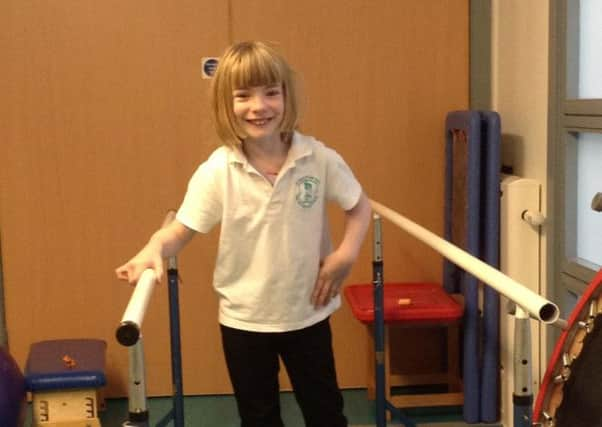Breakthrough surgery helps raise hopes for Niamh


Niamh Horton, nine, from Dundee, travelled to Great Ormond Street Hospital (GOSH) in London for the operation to cut nerves in her spine that were affecting her movement. Her parents, Michelle Reilly and Graeme Horton, now hope the surgery could be offered in Scotland so more youngsters can benefit.
Ms Reilly said: “The surgeon told us this operation would make a difference to her life in all sorts of ways. It has been amazing.”
Advertisement
Hide AdAdvertisement
Hide AdSelective dorsal rhizotomy (SDR) is a minimally invasive technique that involves selectively dividing the sensory nerve roots in the lower spinal cord.
Each nerve root is electronically stimulated, with these responses helping to identify which nerves are contributing to the patient’s spasticity – tight and stiff muscle tone – in the lower limbs. This helps the surgeon decide which nerves to cut.
In recent years, many patients have travelled for surgery to the United States, where the technique was developed.
Neurosurgeon Kristian Aquilina started to treat the first SDR patients in Bristol in 2011. He later moved to GOSH, where Niamh was the first patient to receive SDR, in July. Ms Reilly said the family put Niamh forward for the operation after seeing one of her friends benefit from having the surgery in Bristol.
Niamh was diagnosed with cerebral palsy at nine months old. Having been born at 28 weeks, doctors had been monitoring her progress in case of difficulties due to being born so early. She did not walk until she was three, using a walking frame, and went on to using sticks to get around.
But the family wanted to improve her movement further, and started looking into SDR. Niamh was referred to GOSH. Her parents were pleased when she was accepted, but still had concerns about the potential risks. “We love Niamh the way she is, and you worry if she gets the operation will it affect even the life she has,” Ms Reilly said. “But we just wanted to give Niamh a chance.”
She has improved in lots of simple ways since the operation, her mother said, and has been working hard at physiotherapy. “She can wash and practically dress herself now,” Ms Reilly said. “Even things like sitting at the table. Before, you would have to adjust her quite a bit as she would fall to the side.
“She has an adapted chair, but she doesn’t even use that now. Before the operation it would take her about ten minutes to get out of bed to stretch and get up. Now she just whizzes straight up.” Niamh used a wheelchair for a few weeks after the operation, but is now walking around with the aid of two sticks. However, the family is hopeful that she will soon be able to get around using just one as her muscles build up.
Advertisement
Hide AdAdvertisement
Hide AdMs Reilly recounted a recent visit when Niamh was having physiotherapy in a pool. “She was just floating in the water with no float or anything, which is difficult for a child with cerebral palsy. Then the physio got her to kick off from the side and she just swam on her back two full lengths. She was like any other kid. That was the most amazing thing because I would never have thought she would be able to swim unaided.”
The family is now waiting to see how far Niamh will continue to develop. Ms Reilly said: “I think Niamh will be able to walk independently, I really do.
Mr Aquilina said: “An intensive programme of physiotherapy following the SDR is key to making this operation so worthwhile. Niamh’s determination and spirit has also played a major part in giving her such a positive outcome.”